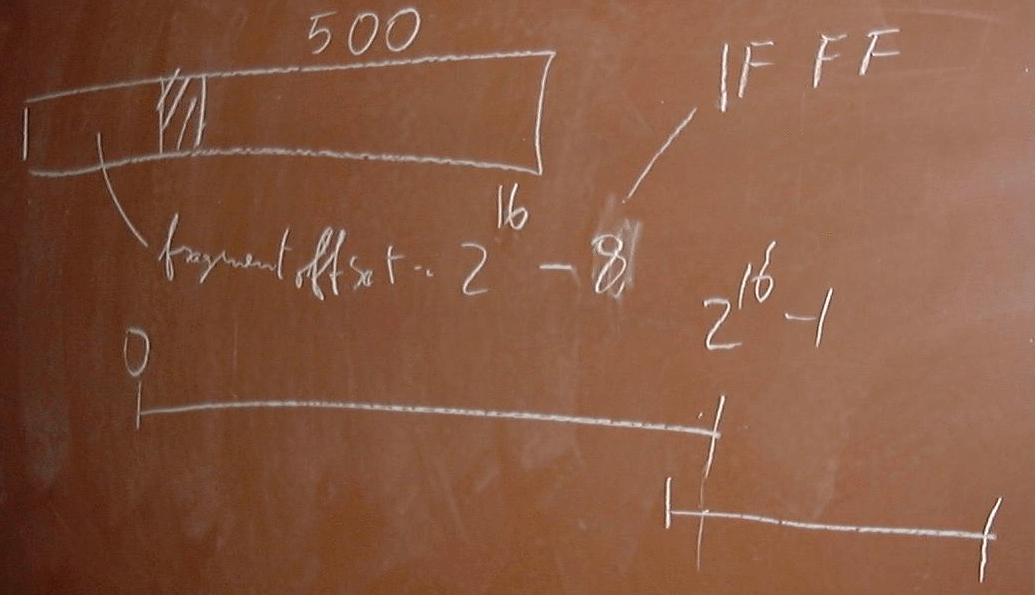Blackboard
Hierarchical Addressing
Byte by Byte, bit by bit, sets and subsets
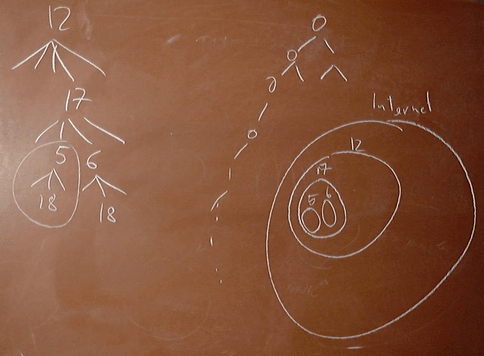
Subnetting
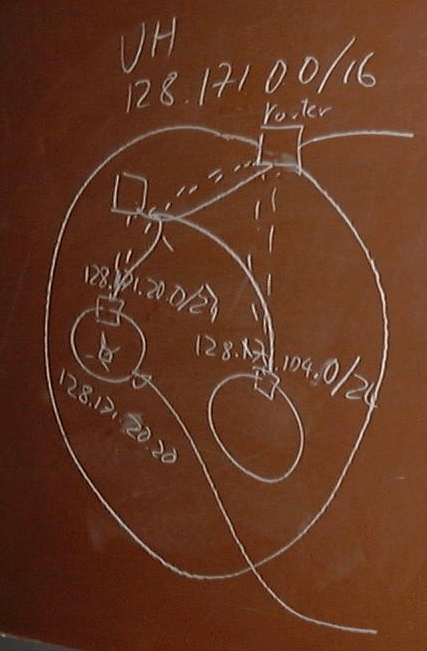
Supernetting
128.171.10.0/24
128.171.11.0/24
the above two networks can be combined into
a single network, with network number
128.171.10.0/23
The netmask for this is
255.255.254.0
Fragmentation
First fragmentation calculation:
- MTU = 1,000
- n = 10,000
- h = 20
- n / (MTU - h) = 10,000 / 980 = 10.x
- therefore, 11 fragments
Another way to see that 11 fragments are needed is that
the first 10 fragments can carry at most
9,800 bytes of payload, so an 11th fragment
is needed.
Router Fragmentation example
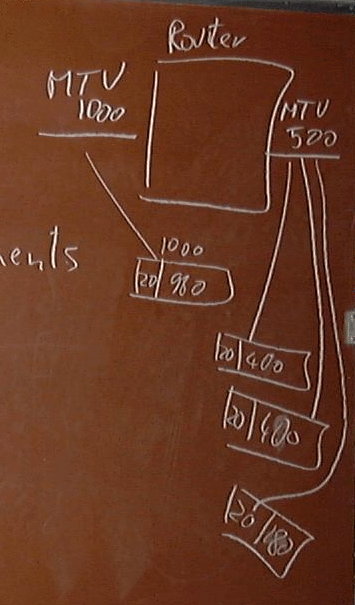 Note that a fragment offset of 400 would be encoded as 50 (since 400 / 8 = 50)
Note that a fragment offset of 400 would be encoded as 50 (since 400 / 8 = 50)
Router Fragmentation example 2
MTU is 504
The received fragment has 20 bytes of header, 980 of data
The first fragment has 20 bytes of header, 480 of data
(cannot have 484 since that is not a multiple of 8)(
The second fragment has fragment offset 480, which is encoded as
60 (since 480/8 = 60)
IP Header Bytes
Used for the in-class exercise.

In-Class Exercise
Here is the original IP packet.
45 00 00 1F
90 AB 01 00
11 11 -- --
80 AB 0A 01
80 AB 0A 02
01 02 03 04
05 06 07 08
09 0A 0B
The first fragment is:
45 00 00 1C
90 AB 21 00
10 11 -- --
80 AB 0A 01
80 AB 0A 02
01 02 03 04
05 06 07 08
The three flag bits are: 0, DF, and MF. Since
MF is 1, the first 4 bits are 0010, which is
2 in hexadecimal.
The second fragment is:
45 00 00 17
90 AB 01 01
10 11 -- --
80 AB 0A 01
80 AB 0A 02
09 0A 0B
Management of holes during reassembly
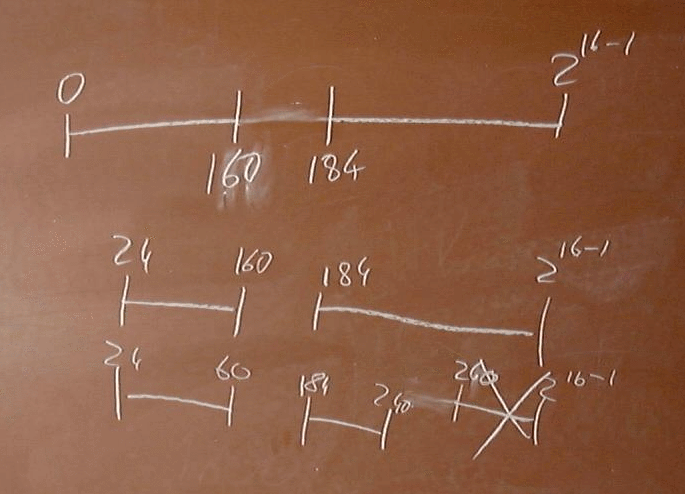
IP minimum MTU
The minimum MTU for carrying IP is
defined to be 576 bytes. Like
all MTUs, this includes the IP
header, so the maximum "safe" IP payload
size is 556 bytes. Safe means we can be pretty
sure it won't need fragmentation.
IPv6 optional headers
IPv4 has options and a protocol field. IPv6 has the next header field,
which may identify a next header or the next higher-level protocol.

Ping of death
